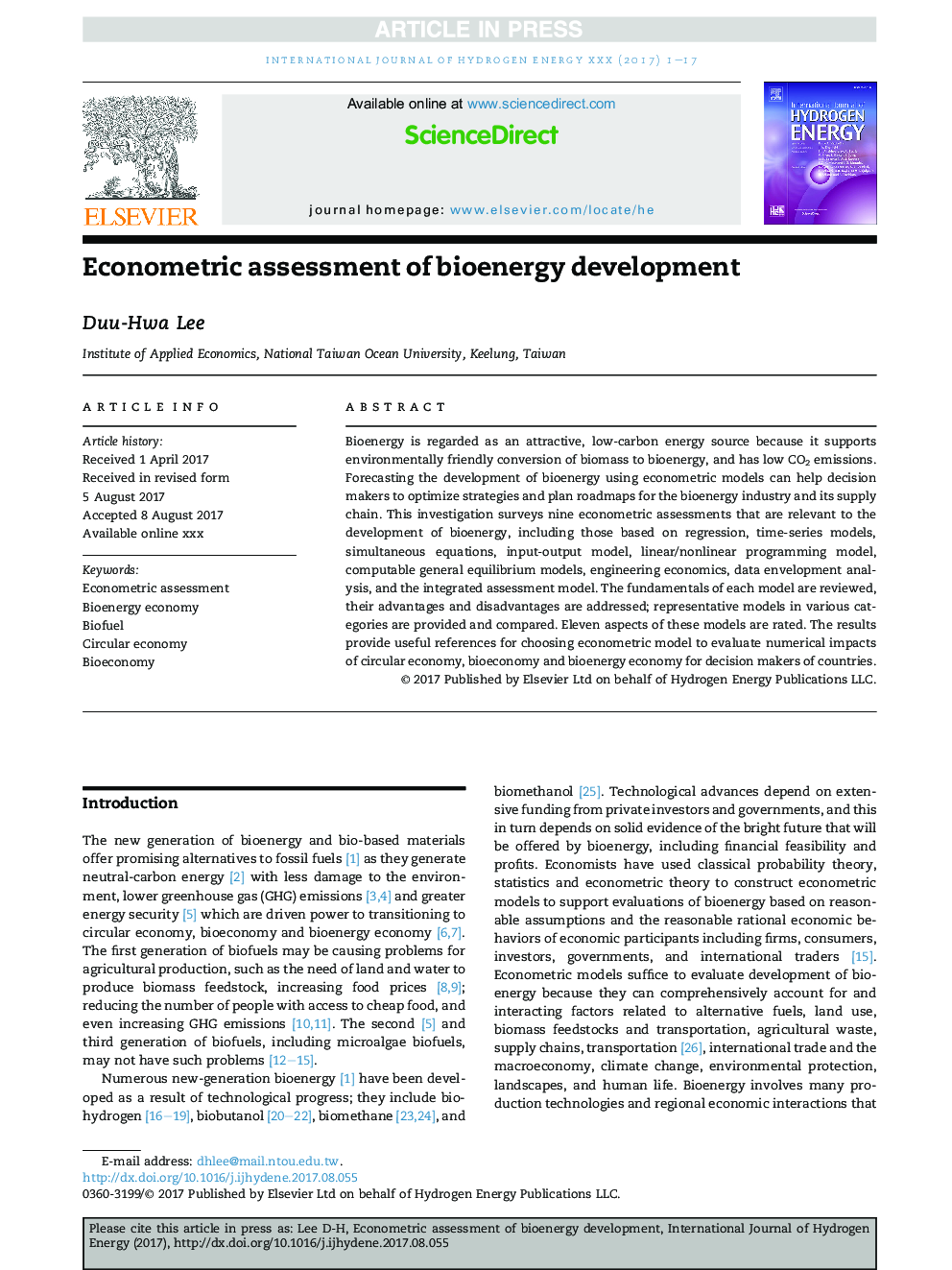| Article ID | Journal | Published Year | Pages | File Type |
|---|---|---|---|---|
| 7709652 | International Journal of Hydrogen Energy | 2017 | 17 Pages |
Abstract
Bioenergy is regarded as an attractive, low-carbon energy source because it supports environmentally friendly conversion of biomass to bioenergy, and has low CO2 emissions. Forecasting the development of bioenergy using econometric models can help decision makers to optimize strategies and plan roadmaps for the bioenergy industry and its supply chain. This investigation surveys nine econometric assessments that are relevant to the development of bioenergy, including those based on regression, time-series models, simultaneous equations, input-output model, linear/nonlinear programming model, computable general equilibrium models, engineering economics, data envelopment analysis, and the integrated assessment model. The fundamentals of each model are reviewed, their advantages and disadvantages are addressed; representative models in various categories are provided and compared. Eleven aspects of these models are rated. The results provide useful references for choosing econometric model to evaluate numerical impacts of circular economy, bioeconomy and bioenergy economy for decision makers of countries.
Keywords
Related Topics
Physical Sciences and Engineering
Chemistry
Electrochemistry
Authors
Duu-Hwa Lee,
